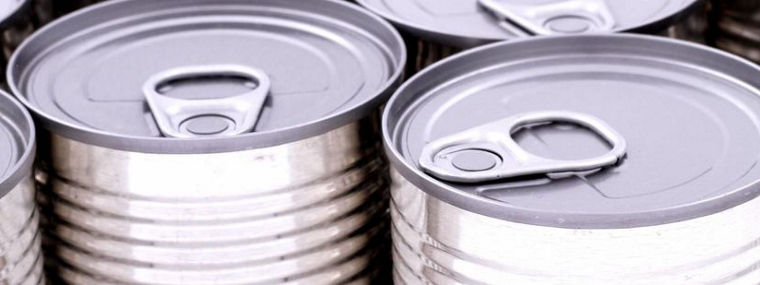Inner Linings For Tin Cans
It’s a staple of our daily lives and available in any supermarket: the tin can, invincible container for any kind of food. Tin cans have none other than Napoleon Bonaparte to thank for their arrival on the shelves of virtually every home in the world. That’s because in 1795, Napoleon offered 12,000 francs in prize money to anyone who could supply his armies with non-perishable food. The winner of the contest was Paris confectioner Nicolas Appert with an invention that was a simple as it was ingenious: fill jars with food, heat the jars, apply an air-tight seal, and there you go—provisions that will stay edible for a virtually unlimited amount of time. What we now know as the
tin can was born in 1810, when British businessman Peter Durand began preserving foods using metal canisters rather than jars.
Today’s global market for canned goods is valued at around several billion dollar and will likely grow further. An even bigger packaging hit than the tin can was the beverage can, which was invented in the US in the early 1930s. Last year, nearly 3.5 billion beverage cans were sold in Germany alone. Demand for compact beverage packaging solutions has been growing worldwide. A coating inside the can is the key to preventing any reaction from occurring between the metal wall and the actual content of the can. In addition to performing exceptionally well, this coating also needs to be highly elastic and durable, so that the food inside will remain well protected even if the can is dented. Products based on epoxy resins have become established over the years as the industry standard. Unfortunately, the basic raw material used for these—bisphenol A, or BPA—has been a subject of public controversy for some time.
This is where Evonik’s Crosslinkers business line comes into play: the experts at Crosslinkers have developed VESTANAT® B1186A, a crosslinker that can be used for making tin can liners based on polyurethane. VESTANAT® B1186A thus meets the strictest requirements of governmental food safety agencies, which have approved the product as a non-hazardous solution for can linings in direct contact with food. This application has been established on the market for several years now.
Crosslinkers - Creating Marketable and Intelligent Solutions
Since 1962, Evonik is a pioneer and reliable partner for its customers and their needs all over the word in the field of isophorone chemistry. Today, 60 years later, Evonik is represented worldwide by its innovative isophorone-based VESTA brand family. Applications range from coatings and adhesives to civil engineering, high-performance elastomers and composites. Evonik is now going even further by being the first company in the world to create a sustainable isophorone string in order to take a pole position in climate protection and to help customers to improve their carbon footprint.
VESTANAT® B1186A enables non-toxic protective linings for tin cans used in food applications.
